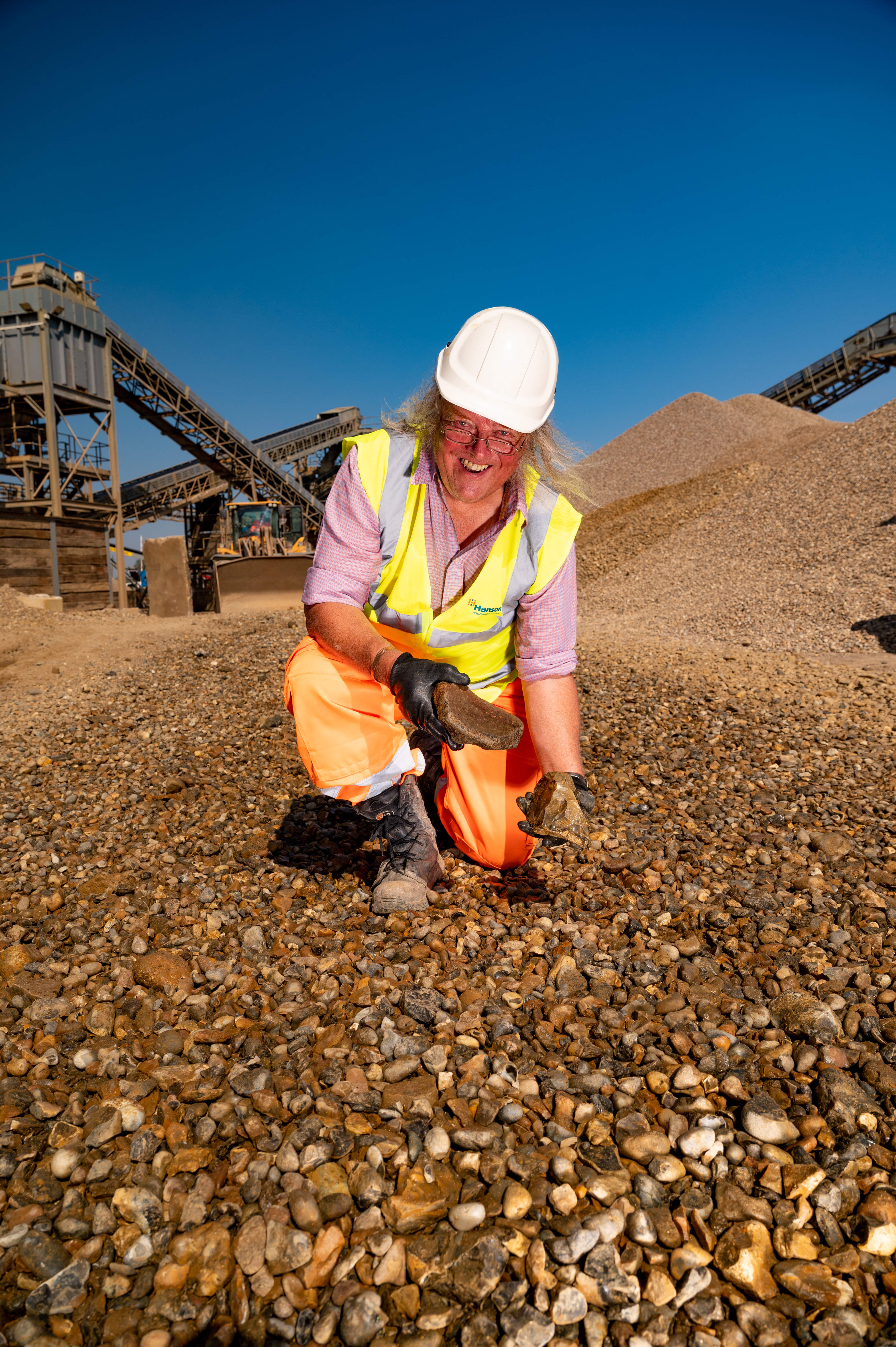Time Team archeologist Phil Harding
Sometimes I get a fascinating job in the most unexpected places.
Last week I was asked to shoot at Hanson's Dagenham site alongside the Thames in what can only be described as a heavily industrialised area. Nestled - if that is the right word - between the Ford Dagenham plant and, ironically, a car breakers and metal recycling unit, it initially doesn't seem the place to find one of the foremost and best recognised archeologists.
But there I found Time Team archaeologist Phil Harding hunting for prehistoric fossils in gravel that had been dredged from the North Sea. The area that is being excavated, off Great Yarmouth, used to be land and home to prehistoric people as proved by the flint axe heads and mammoth bones that have been found in the loads.
Phil's enthusiasm was infectious and I felt a bit disappointed that I didn't find any prehistoric artefacts (though, keep it to yourself, one rock looks very much like another to me...)
Last week I was asked to shoot at Hanson's Dagenham site alongside the Thames in what can only be described as a heavily industrialised area. Nestled - if that is the right word - between the Ford Dagenham plant and, ironically, a car breakers and metal recycling unit, it initially doesn't seem the place to find one of the foremost and best recognised archeologists.
But there I found Time Team archaeologist Phil Harding hunting for prehistoric fossils in gravel that had been dredged from the North Sea. The area that is being excavated, off Great Yarmouth, used to be land and home to prehistoric people as proved by the flint axe heads and mammoth bones that have been found in the loads.
Phil's enthusiasm was infectious and I felt a bit disappointed that I didn't find any prehistoric artefacts (though, keep it to yourself, one rock looks very much like another to me...)

